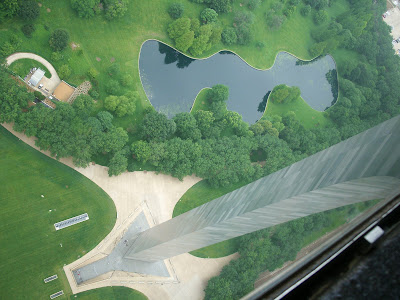There are people out there who believe all kinds of strange things. There are those who believe that anyone but Lee Harvey Oswald shot President Kennedy, that we never really landed on the moon, that President Obama is not a natural-born citizen, and that dioceses cannot dissolve their union with the General Convention of the Episcopal Church, USA. Apparently those in that last group, at least, believe that people might appeal decisions they win in court.
Now while I would expect a news agency like the Associated Press to be unbiased (or at least try to be), I don't necessarily expect the press releases of the
Diocese of Fort Worth and its
counterpart to be unbiased reports. But I would expect them to not loose touch with reality.
So while I was amused by some of the spin in
the press release from Bishop Ohl's group, I was totally blown away by the ending. This was the last sentence:
"No decision has been made whether either the Episcopal faction or the Southern Cone faction will appeal the decision to the Texas Supreme Court." I could understand why the Episcopal faction would appeal, since their whole strategy has been hinging on this, but the Southern Cone faction appealing the decision they won? Are you kidding me?
Note what the Court of Appeals
actually said in its conclusion:
"We conditionally grant the writ of mandamus and direct the trial court to modify its order of September 16, 2009 to follow the mandates of rule 12 and to strike the pleadings filed by Mr. Nelson and Ms. Wells on behalf of the Corporation and the Fort Worth Diocese and bar them from appearing in the underlying cause as attorneys of record for those named plaintiffs. If the trial court fails to do so, the writ will issue." That means the pretender group (Bp Ohl,
et al) will have their pleadings stricken by Judge Chupp (or by the higher court through the Writ if he does not take advantage of the opportunity). And attorneys Nelson and Wells are barred from representing the Diocese and Corporation
because they were not hired by Bp Iker,
et al.
If they still want to sue, they will have to file a new suit as a group of individuals, but they will not be able to bring the suit as THE Episcopal Diocese of Fort Worth and the Corporation of the Episcopal Diocese of Fort Worth because none of those individuals are officers in these entities.
It would be best if, when they regroup and re-strategize, they just decide not to file the lawsuit.
UPDATE: The trial judge has now followed through with the ruling from the Appeals Court and tossed the TEC group out of court. But, of course,
"No decision has been made whether either the Episcopal faction or the Southern Cone faction will appeal the decision to the Texas Supreme Court."









































